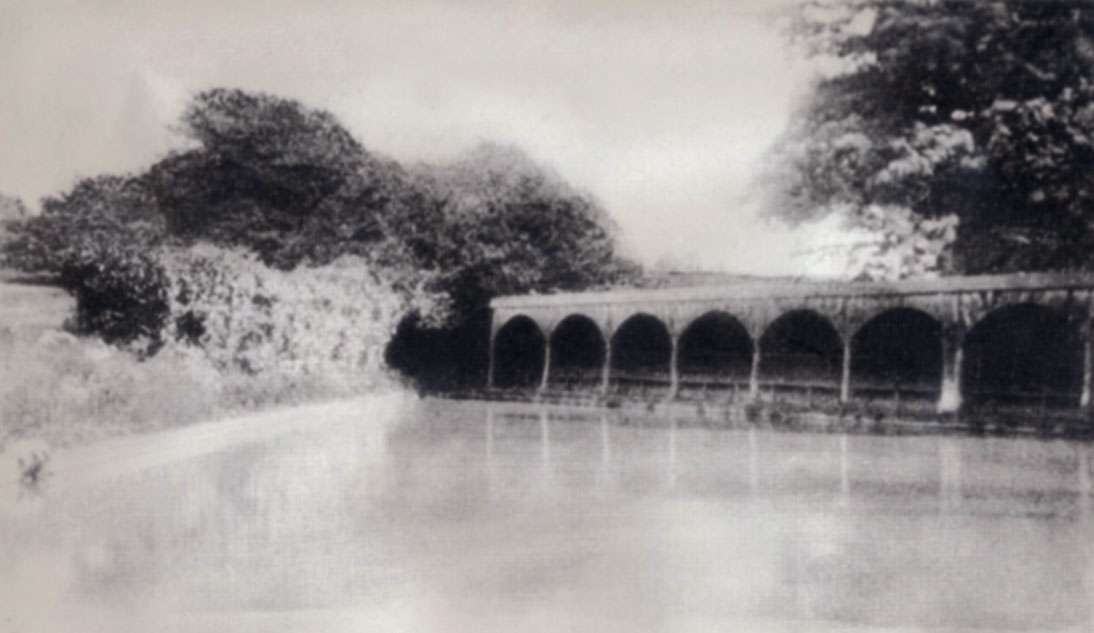
Cranleigh School’s original swimming pool, 1877 (M. Williamson, Cranleigh: 1st 150 years)
Swimming as a major sport became increasingly popular during the 20th century, until, in 1970, a study by Keele University revealed that swimming had become the most favoured national pastime.
In the first Olympic Games of the modern era (1896), there were only four swimming events, male only. At the Paris Olympics of 1900, the programme included fancy events such as an underwater race and an obstacle race, swum in the river Seine. Two women’s events were introduced in 1912, but from then on, swimming began to be taken seriously and the number of events for both men and women increased steadily.
One of Swallow’s Tiles clay-pit pools, now preserved on Swallowhurst estate, close to Bookhurst Hill, 2021
Capt. Matthew Webb swam the Channel in 1875 using, incredibly, breaststroke. Gradually for speed, variants of the crawl were adopted from observing Pacific Islanders.
Swimwear also changed. In 1913, the sweater company Jantzen made the first elastic swimsuit, and as the 20th century progressed, swimming costumes became much more functional. You may well be able to see this in your old family photo albums. Topless swimsuits for men were first worn in an official competition in 1935, and two-piece swimsuits for women came in after 1943, resulting from the wartime US government’s order for a 10% reduction in the fabric used for swimsuits.
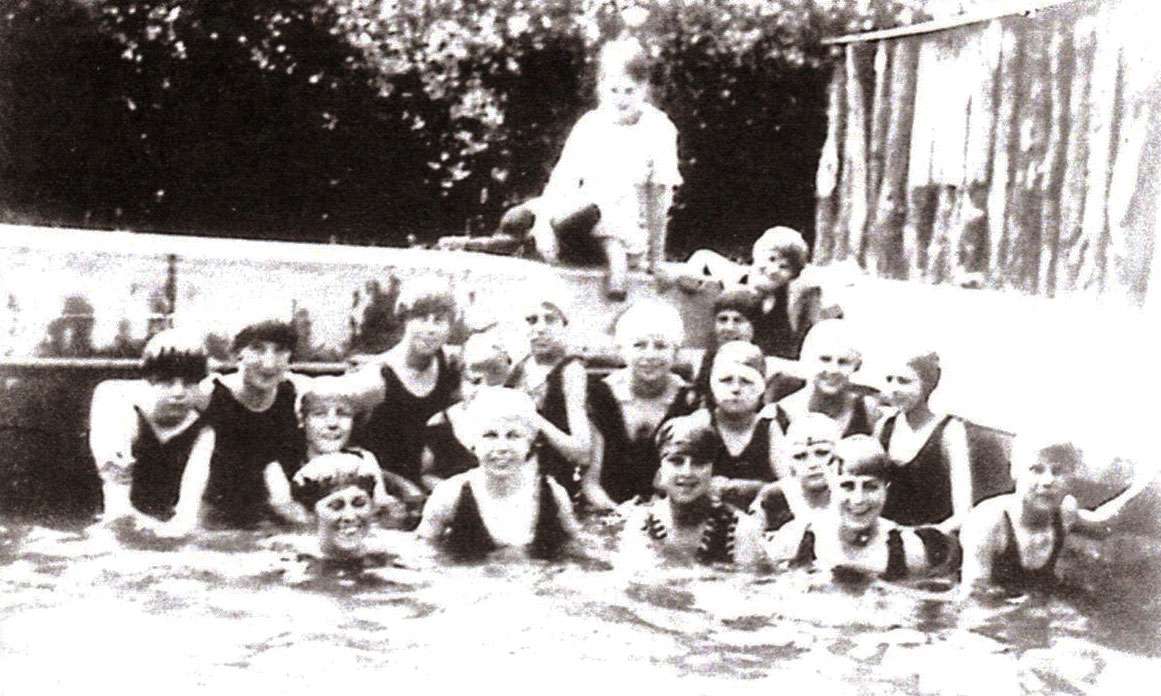
This private pool was in The Drive, opposite the end of Mount Road (Seymour & Warrington, Cranleigh Voices)
Over the same period, many public and private pools were constructed throughout the country. They were mostly outdoor pools up to the Second World War. After that, in view of the British climate and with greater prosperity, indoor ones were built. A great new indoor pool was opened at Crystal Palace in 1964 for national competitions.
Surrey Advertiser, Dec. 1951 (Cranleigh History Society, Nigel Nicholson Papers)
There was a very early swimming pool at Cranleigh School from 1877. It was fed by springs on Winterfold, but was never very popular because it was muddy and contained leeches! Underwater weeds were a hazard too. From 1933, Cranleigh people could take the train to Guildford to enjoy the Lido there, built to relieve unemployment. Otherwise, boys and men swam where they could, for example in Swallow’s Tiles claypit pools, Vachery Lake and the Wey and Arun Canal.
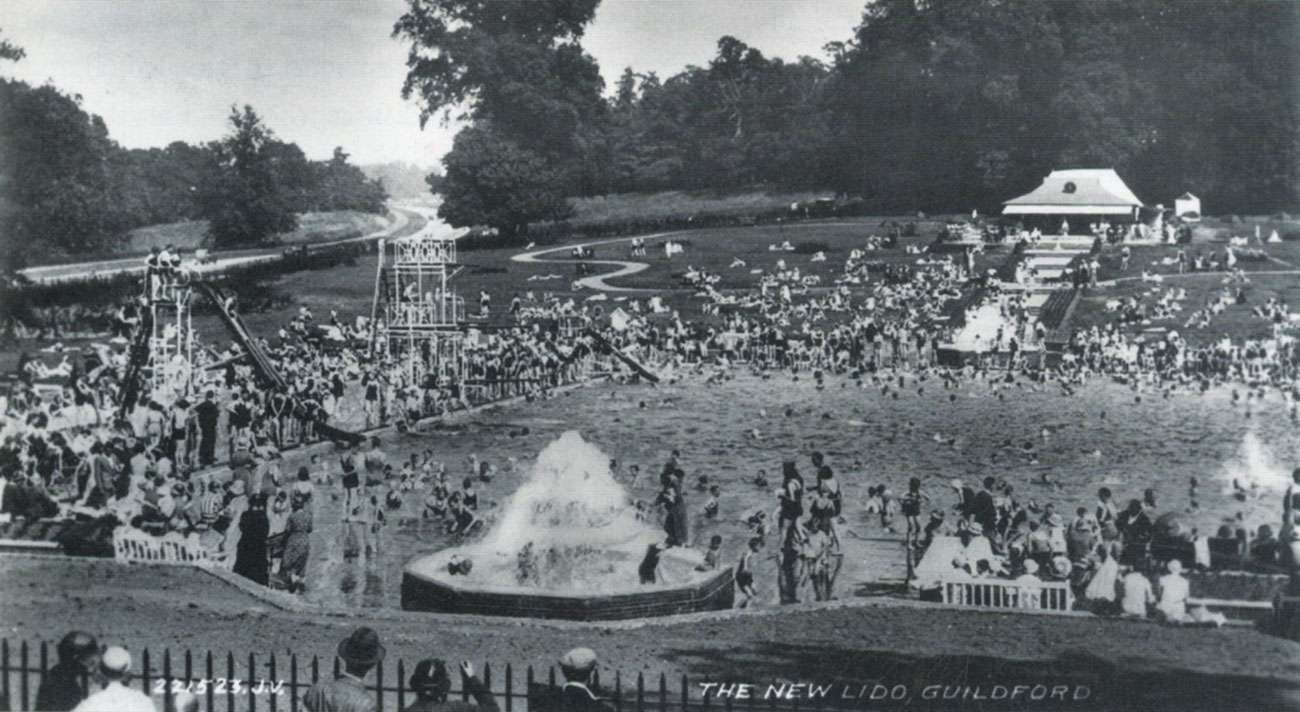
Postcard of Guildford Lido, 1933
Bert Lade, of Lade’s butchers next to the ‘White Hart’, was a year-round swimmer, and always swam in Vachery Lake on Christmas Day. The story is told that he would break the ice to swim, but he himself denied it, saying that it would be ‘foolhardy and reckless’. He and Claude Blogg, headmaster of the C. of E. School, ran a youth club, with a strong emphasis on physical fitness. In the 1950s, they gave swimming lessons at Swallow’s claypits, and so many wanted to learn that they had to turn some away. When three Alfold boys were tragically drowned in a pool at Fuller’s Earth works in Knowle Lane, Bert Lade resolved, as he left the inquest in Guildford, to campaign for a swimming pool where young and old could swim safely. At first he and Claude Blogg set their sights on converting a static water tank behind the Village Hall into an open-air pool. This plan was abandoned when the Scout Hall was built. Eventually, the Parish Council and Hambledon Rural District Council agreed jointly to back the project, but the money had to be raised without drawing on the rates.

Lord Nugent cutting the first sod on 27th April 1968 (Surrey Advertiser, Blogg Papers)
Lord Nugent, who had been the local member of parliament 1950-66, performed the ceremony of digging the first sod in April 1968, and fund-raising in various forms was pursued vigorously. Above all, though, it was a gift of £30,000 by Capt. Percy Butt of ‘Summerland’, a friend of Bert Lade, which ensured the success of the project.
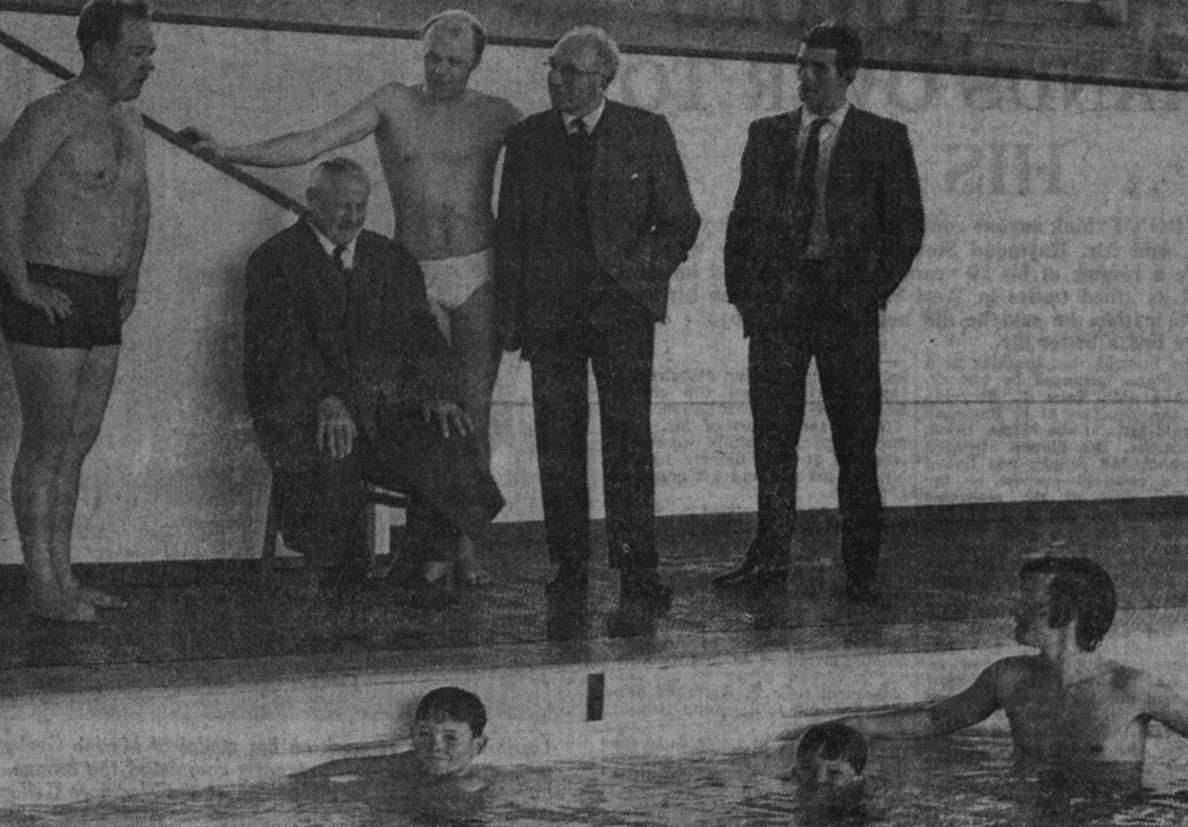
Opening day (Surrey Advertiser, April 25th 1970, Blogg Papers)
The pool was opened on Wednesday April 22nd at 9.00am. Bert Lade, recovering from a broken hip, and Claude Blogg were both there. Over 1,000 people used the pool on the first day. The following week gala events were staged each night, including demonstrations of synchronised swimming, Surrey Police’s sub aqua methods, canoeing by the Army, lifesaving by Guildford Life Guards, a water polo match and races between local schools and swimming clubs from the neighbourhood. Up to 300 spectators were able to watch from the poolside seats. In the first seven days, 7,563 people paid for admission to the pool.
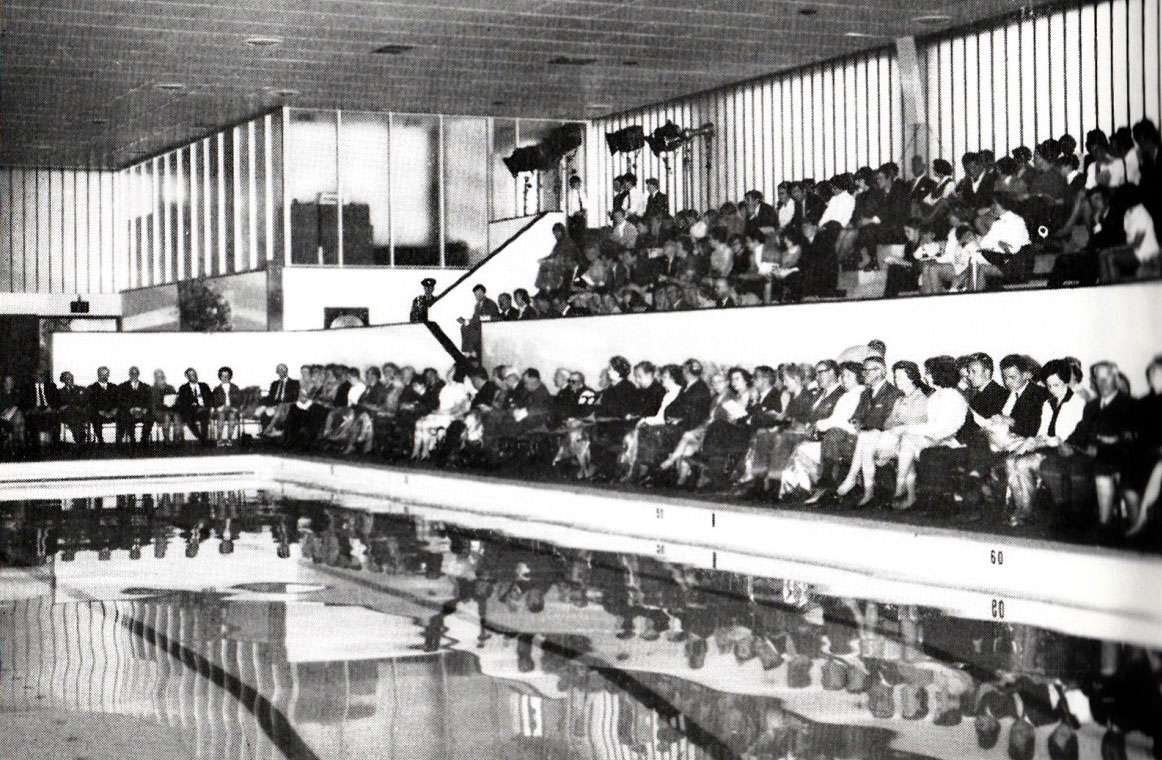
Spectators at one of the gala events (Cranleigh Guide, 1972)
Bert Lade declared that the swimming pool was ‘a dream come true’, and vastly better than the static tank idea!
The Cranleigh History Society plans to resume its monthly meetings as soon as the Covid-19 regulations permit.

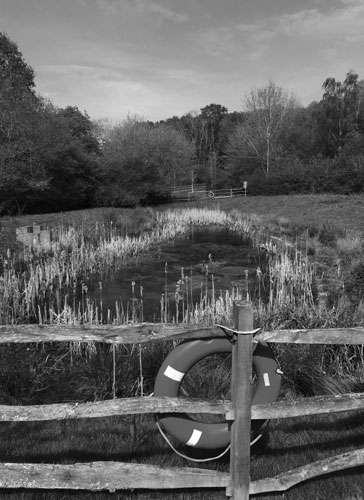
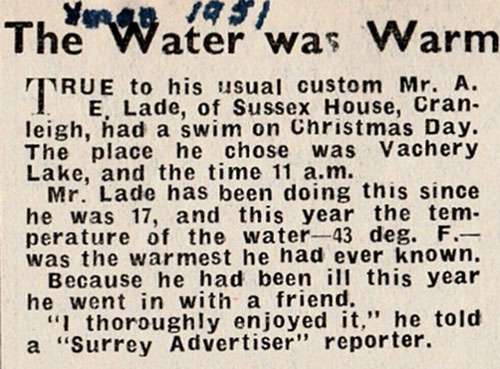











I was a steward at the pool opening!